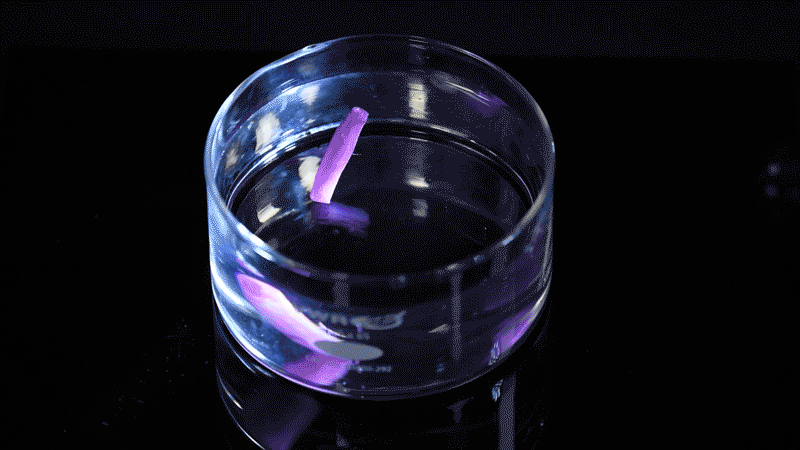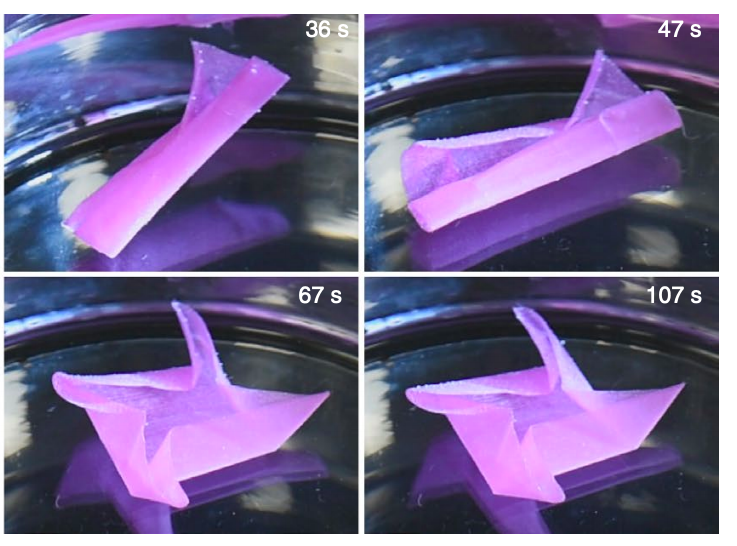Researchers from Harvard University’s School of Engineering and Applied Sciences (SEAS) have developed a 3D printing material that can be pre-programmed with reversible shape memory capabilities.
The Harvard team’s novel filament consists of two chains of keratin arranged into spring-like structures that have been twisted together. Once combined into a ‘coiled coil,’ the material is capable of being changed into any shape before returning to its original formation in a ‘shape memory effect.’
Given that the team’s biocompatible material was created using recycled wool, the polymer also has potential ecological benefits as well as applications in the medical prosthesis and textile sectors.
“With this project, we have shown that not only can we recycle wool but we can build things out of the recycled wool that have never been imagined before,” said Kit Parker, senior author on the paper. “With recycled keratin protein, we can do just as much, or more, than what has been done by shearing animals and, in doing so, reduce the environmental impact of the textile and fashion industry.”
A growing demand for shape-memory materials
The number of applications for shape-memory materials has increased exponentially in recent years. Companies in the civil engineering, aerospace, wearables, and medical device sectors are all showing an increased demand for polymers that can be tailored, and provide more flexibility than existing polymers.
Despite recent research in the area, developing a material that is both customizable and biocompatible has remained a challenge. In particular, it has proved difficult to control the organization of the polymer’s actuation mechanisms at a molecular level throughout all spatial scales.
Shape-memory features are often associated with synthetics, but they are also seen in biological substrates, with Keratin-based helices demonstrating continuous structural transition. In biological tissues such as sea snail egg capsules or animal skin, they have developed this mechanical transformation through evolution to protect them from predators. Inspired by its applications in nature, the Harvard team set about replicating the reaction in highly-processable printing material.
The researchers’ novel filament is specifically based on the keratin anisotropic organization that is present in animal hair. Using natural wool as a basis for the team’s 3D printing material provided many benefits such as water-triggered responses and greater tensile strength than similar existing systems. Extrusion-based production also proved to be highly compatible with the wool, as it self-organized into ‘protofibrils’ (or clusters) yielding enhanced processability.

The Harvard team’s wool-based filament
The research team used fibrillar keratin, extracted from the Angora wool of discarded clothing to create their novel 3D printing polymer. In order to extract and harness the keratin content within the wool, the team used a combination of lithium bromide and dithiothreitol (DTT) solutions to induce a solid-to-liquid transition. The resulting crystallized keratin was then extruded further, turning it from a protein dope into a printable hydrogel.
Aiming to assess the impact of the chemical reaction, the team deployed a cryogenic transmission electron microscopy to verify that the single keratin chains had successfully formed into coiled coils. Results showed that the individual strands had converged into larger protofibers measuring ∼3nm with little evidence of protein degradation. Further micrograph testing also revealed that the material has a tensile strength of +1.03MPa, equal to those of both nylon and silk fibers.
Critically, the protofibers were also found to self-organize into a nematic crystal phase when subjected to shear stress, while returning to their original shape following a pre-programmed stimulus. In order to evaluate the shape memory potential of their new material, the Harvard team 3D printed the keratin sheets into a variety of shapes and structures.
A mixture of hydrogen peroxide and monosodium phosphate was then used to give the shapes a permanent design to return to, and the prototypes were submerged in water. Once underwater, the materials became malleable and could be reshaped into any layout desired, but when they were removed, the dried fibers returned to their pre-programmed shapes.

As the fibers dried, and their hydrogen bonds began to reform, the sheets showed a sudden increase in stress that corresponded with the material returning to the same level of tensile strength as before. After rehydration, and several stress-strain cycles, the recovery efficiency of the fibers reached values close to 100 percent with minimal observable shrinkage.
Overall, the researchers concluded that they had created a unique hierarchically structured fiber-based 3D printing material with shape-memory properties and a high level of mechanical stability. According to the Harvard team, their renewable resource could be leveraged in the future to produce biodegradable smart textiles such as body-adaptable garments or medical products that absorb strain energy.
“Whether you are using fibers like this to make brassieres whose cup size and shape can be customized every day, or you are trying to make actuating textiles for medical therapeutics, the possibilities of our work are broad and exciting,” concluded Parker. “We are continuing to reimagine textiles by using biological molecules as engineering substrates like they have never been used before.”
Previously-developed shape memory polymers
Given the growing number of end-use applications for shape-memory materials, it is hardly surprising that a number of other researchers have developed their own polymer-based alternatives.
Scientists from ETH Zurich have developed a series of 3D printed shape-memory capable meta-materials. Designed as part of a broader research project into active self-deploying structures, the materials could potentially be utilized within biomedical, aerospace, or engineering devices.
A research team from Lawrence Livermore National Laboratory (LLNL) has used Direct Ink Writing (DIW) 3D printing to create silicone structures that can recover from compression. The silicones could have future applications in ‘wearable protective padding’ capable of being activated under certain temperature conditions.
Researchers from the Georgia Institute of Technology have used additive manufacturing to fabricate tensegrity objects that can change shape based on the level of tensity applied to them. The material can be programmed to dramatically expand, giving it the potential to be used in biomedicine or aerospace products in the future.
The researchers’ findings are detailed in their paper titled “A bioinspired and hierarchically structured shape-memory material,” which was published in the Nature Materials journal. The report was co-authored by Luca Cera, Grant M. Gonzalez, Qihan Liu, Suji Choi, Christophe O. Chantre, Juncheol Lee, Rudy Gabardi, Myung Chul Choi, Kwanwoo Shin, and Kevin Kit Parker.
Nominations for the 2020 3D Printing Industry Awards are still open, let us know who is leading the industry now.
The fourth edition of the 3D Printing Industry Awards Trophy Design Competition is now underway. Enter your design for the chance to win a CraftBot Flow 3D printer.
To stay up to date with the latest 3D printing news, don’t forget to subscribe to the 3D Printing Industry newsletter or follow us on Twitter or liking our page on Facebook.
Are you looking for a job in the additive manufacturing industry? Visit 3D Printing Jobs for a selection of roles in the industry.
Featured image shows the Harvard team’s novel material returning to its pre-programmed star shape upon being introduced to water. Gif via Harvard SEAS.



